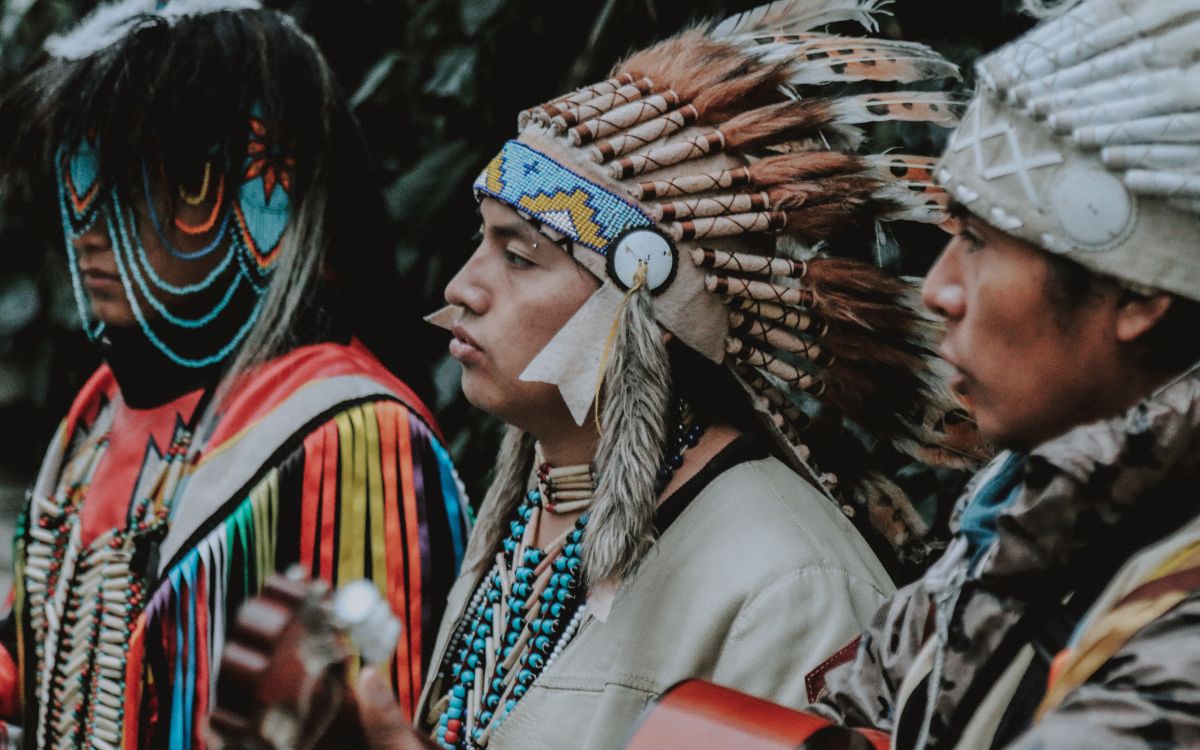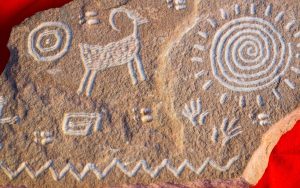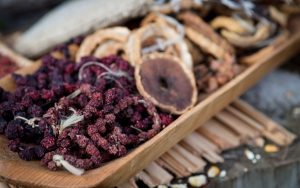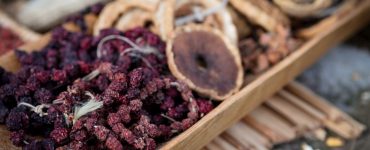Native American cuisine is a rich tapestry of flavors, techniques, and ingredients that have been passed down through generations. It is a vibrant reflection of the diverse cultures and traditions of the indigenous peoples of North America.

In this article, we will explore some of the key ingredients that form the foundation of Native American cuisine, their significance, and the ways in which they have shaped the culinary landscape. Get ready to embark on a culinary journey that will deepen your appreciation for the indigenous culinary heritage of this land.
Corn: The Sacred Staple
Corn holds a sacred place in Native American cuisine, serving as a cornerstone ingredient that has sustained indigenous communities for centuries. Its cultural significance goes beyond mere sustenance, as corn is deeply intertwined with spiritual beliefs, rituals, and agricultural practices. Let’s delve into the rich history and diverse uses of corn in Native American culinary traditions.
Corn Cultivation and Harvest
Native American tribes developed sophisticated agricultural techniques to cultivate corn, also known as maize. They understood the importance of selecting the right seeds, preparing the soil, and timing the planting to ensure successful harvests. Cornfields were meticulously cared for, with some tribes employing companion planting methods, such as the Three Sisters, which combined corn, beans, and squash to maximize growth and mutual benefits.
Versatility in Native American Dishes
Corn’s versatility shines through in Native American cuisine, as it is used in a myriad of dishes. One iconic creation is cornbread, a staple found in various tribal cuisines. Its rich, golden texture and slightly sweet flavor make it a beloved accompaniment to meals. Tortillas, made from ground cornmeal or masa, are another versatile creation that serves as a foundation for many dishes.
Hominy and Its Cultural Significance
Hominy, a traditional Native American ingredient, holds cultural significance in many tribal communities. It is made by soaking dried corn kernels in an alkali solution, a process known as nixtamalization. This technique not only enhances the flavor and nutritional value of corn but also contributes to the preservation of Native American culinary traditions.
Traditional Recipes
Native American cuisine features a plethora of traditional recipes centered around corn. One such example is succotash, a hearty and nutritious dish made with corn, beans, and sometimes squash. It represents a harmonious blend of flavors and textures, showcasing the synergy between key indigenous ingredients. Additionally, corn-based soups, stews, and porridges are cherished culinary creations passed down through generations.
Beans: A Protein Powerhouse
Beans have long been recognized as a vital ingredient in Native American cuisine, providing essential nutrition and sustenance. These protein powerhouses are not only rich in nutrients but also versatile in their culinary applications. Let’s explore the significance of beans in Native American culinary traditions and their contribution to the overall health and well-being of indigenous communities.
Varieties and Cultivation
Native American tribes cultivated a wide range of bean varieties, each with its unique characteristics and flavors. From the colorful and hearty pinto beans to the creamy and delicate Anasazi beans, indigenous peoples embraced the diversity of beans and incorporated them into their diets. The cultivation of beans involved careful selection of seeds and nurturing plants through sustainable agricultural practices.
Nutritional Value
Beans have long been celebrated for their exceptional nutritional value. They are an excellent source of plant-based protein, fiber, and essential minerals, making them a key component of a well-rounded diet. Native American communities recognized the importance of incorporating beans into their meals to support overall health and provide sustenance, especially in times when other food sources were scarce.
Succotash and Three Sisters Stew
Beans play a prominent role in traditional Native American dishes, with succotash and Three Sisters stew being notable examples. Succotash, a combination of corn, beans, and sometimes squash, is a nourishing dish that reflects the harmony and balance of indigenous culinary traditions. The Three Sisters stew brings together corn, beans, and squash in a flavorful and nutrient-rich medley, showcasing the complementary qualities of these ingredients.
Sustainability and Cultural Significance
Beyond their nutritional benefits, beans hold cultural significance in Native American communities. They symbolize sustainability, as beans can fix nitrogen in the soil, enhancing fertility and reducing the need for synthetic fertilizers. This sustainable approach to agriculture aligns with indigenous values of respecting and preserving the earth for future generations, further deepening the connection between beans and indigenous cultural heritage.
Revitalizing Indigenous Food Systems
In recent years, there has been a resurgence of interest in indigenous food systems, including the revival of native bean varieties and traditional bean-based recipes. Indigenous chefs, organizations, and farmers are championing the importance of beans in Native American cuisine and advocating for their cultivation and consumption. By supporting these initiatives, we not only promote healthier eating habits but also contribute to the preservation of indigenous knowledge and cultural traditions.
Wild Game: A Taste of Tradition
Wild game has been a vital part of Native American cuisine for centuries, providing sustenance and connecting indigenous communities to their ancestral lands. The hunting and gathering of wild game reflect the deep-rooted traditions and close relationship between indigenous peoples and nature. Let’s explore the significance of wild game in Native American culinary traditions and the flavors it brings to the table.
Cultural Significance of Hunting
Hunting wild game holds profound cultural significance for Native American communities. It is not solely about acquiring food but also about honoring the spirits of the animals, practicing sustainable hunting methods, and passing down ancestral knowledge. Hunting rituals and traditions celebrate the interconnectedness between humans and the natural world, ensuring a respectful and balanced relationship.
Diverse Game Meats
Native American cuisine showcases a wide variety of game meats, each with its unique flavors and culinary applications. Bison, often referred to as the “American buffalo,” holds a special place in many tribal traditions and is celebrated for its lean and richly flavored meat. Other game meats like venison, rabbit, and wild fowl are also cherished for their distinct taste and nutritional benefits.
Traditional Preparation Techniques
Indigenous communities have developed intricate techniques for preparing and cooking wild game, ensuring its flavors are showcased while maximizing nutrition. Smoking, drying, and curing methods are often employed to preserve meat, providing sustenance during harsh winters or long journeys. These traditional techniques enhance the taste and texture of game meats, adding depth and complexity to dishes.
Iconic Wild Game Recipes
Native American culinary traditions feature iconic recipes that highlight the flavors of wild game. One example is pemmican, a traditional meat preservation technique that combines dried game meat with rendered fat and sometimes dried berries. Pemmican is not only highly nutritious but also a convenient and long-lasting food source for nomadic tribes.
Indigenous Herbs and Spices: Flavorful Traditions
Indigenous herbs and spices form an integral part of Native American cuisine, infusing dishes with unique flavors, aromas, and medicinal properties. These flavorful traditions reflect the deep connection between indigenous communities and the natural resources found in their ancestral lands. Let’s explore the significance of indigenous herbs and spices in Native American culinary traditions and the cultural richness they bring to the table.
Herbs as Cultural Signifiers
Indigenous herbs hold cultural significance, symbolizing the ancestral knowledge passed down through generations. Native American tribes have long recognized the healing properties and spiritual significance of specific herbs. These herbs were used in traditional ceremonies, rituals, and medicinal practices, further deepening the connection between culinary traditions and cultural heritage.
Aromatic and Medicinal Properties
Indigenous herbs and spices are valued not only for their flavors but also for their medicinal properties. Sage, a sacred herb in many Native American cultures, is known for its cleansing and purifying qualities. Other herbs like juniper berries, wild mint, and sumac were used for their aromatic and medicinal benefits, enhancing both the flavor and the health benefits of dishes.
Traditional Herb Combinations
Native American cuisine often incorporates a blend of indigenous herbs and spices to create complex and harmonious flavors. Traditional herb combinations vary among tribes and regions, each offering a unique sensory experience. These combinations not only enhance the taste of dishes but also reflect the diverse cultural traditions and geographical influences of different indigenous communities.
Infusing Flavors in Native American Dishes
Indigenous herbs and spices are used in a variety of Native American dishes, adding depth and character to the flavors. Whether it’s seasoning wild game meats, infusing soups and stews, or enhancing the taste of vegetable-based dishes, these flavorful additions contribute to the culinary tapestry of Native American cuisine.
Conclusion
As we conclude our exploration of the key ingredients in Native American cuisine, we are reminded of the invaluable contributions of indigenous peoples to the culinary world. The indigenous cultures of North America have cultivated a deep understanding of the land and its resources, harnessing the power of ingredients unique to their regions. From the versatile corn and hearty beans to the aromatic wild herbs and game meats, Native American cuisine embodies a profound connection to nature and the wisdom of ancestral knowledge.








